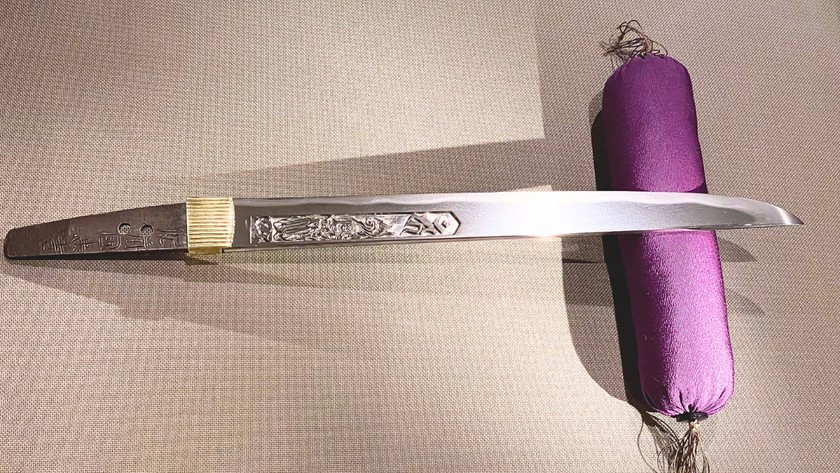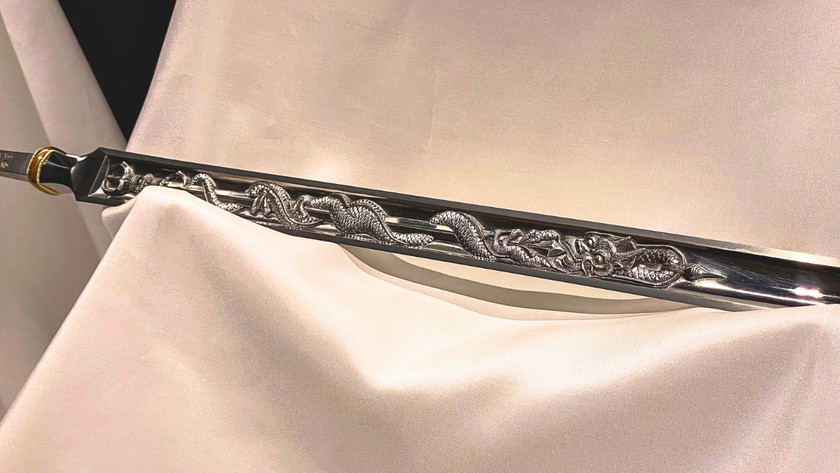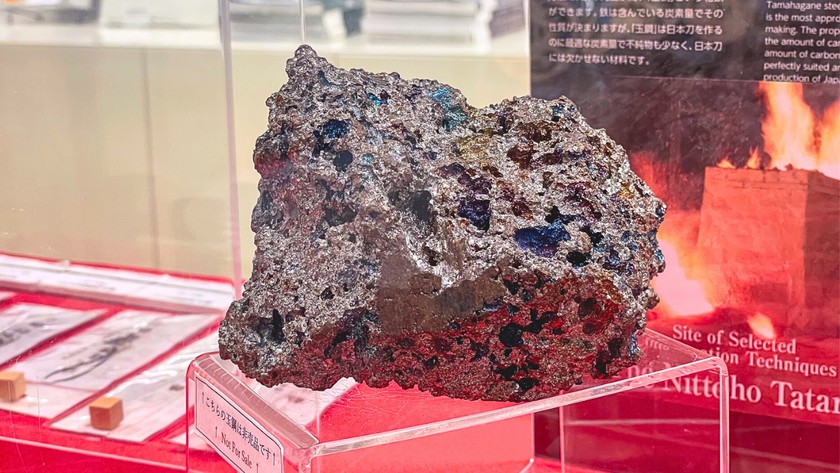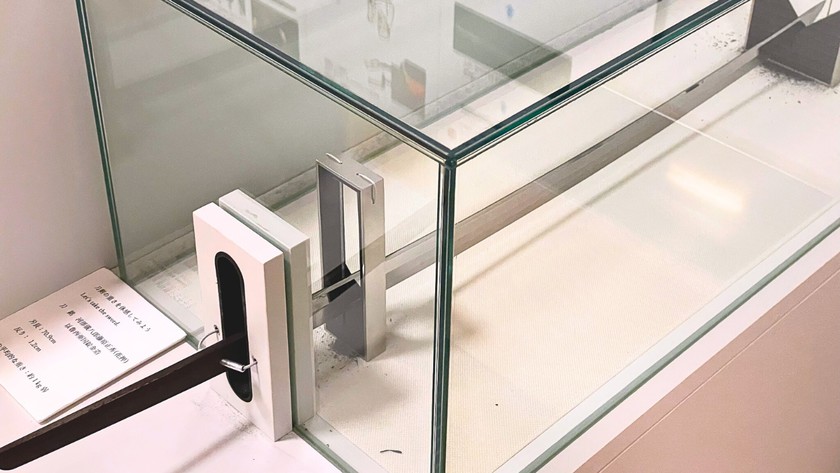Asakusa
2024.12.27
[Asakusa] Discover the Art and History of Samurai Swords at the Japanese Sword Museum in Ryogoku, Tokyo

For many, an interest in traditional Japanese cultures begins with their portrayal in pop culture. The Disney+ massive hit TV series Shogun, for instance, has captivated audiences worldwide with its depiction on Japan’s samurai era, featuring historically accurate swords and costumes. If you’re up for discovering the artistry and history of Japan, including the Warring States Period during your time in Tokyo, the Japanese Sword Museum, located in Ryogoku, a historic district near Asakusa, is a must-visit destination.
Table of Contents
Explore Authentic Japanese Swords and Accessories at the Japanese Sword Museum
 Established in 1968 and relocated to its current Ryogoku location in 2017, the Japanese Sword Museum is a museum dedicated to preserving and showcasing Japanese swords alongside related artifacts. Operated by the Society for the Preservation of the Japan Art Sword, the museum features an exquisite collection, including authentic Japanese swords (katana), sword guards (tsuba), and mountings (koshirae). Some of these pieces are designated as National Treasures or Important Cultural Properties by the Japanese government.
Established in 1968 and relocated to its current Ryogoku location in 2017, the Japanese Sword Museum is a museum dedicated to preserving and showcasing Japanese swords alongside related artifacts. Operated by the Society for the Preservation of the Japan Art Sword, the museum features an exquisite collection, including authentic Japanese swords (katana), sword guards (tsuba), and mountings (koshirae). Some of these pieces are designated as National Treasures or Important Cultural Properties by the Japanese government. According to Daiki Koiwai, a curator at the museum, this is a unique destination where people interested in Japanese traditions—especially visitors from overseas—can explore culture, history, and craftsmanship through the artistry of Japanese swords.
According to Daiki Koiwai, a curator at the museum, this is a unique destination where people interested in Japanese traditions—especially visitors from overseas—can explore culture, history, and craftsmanship through the artistry of Japanese swords.“We’ve recently welcomed many English-speaking visitors, so we’ve added English captions and explanations for the exhibitions,” he shares. “Visitors can easily access these using QR codes and their smartphones.”
Deepen Your Knowledge of Japan by Developing an Appreciation for Japanese Swords
 At the Japanese Sword Museum, you can witness the evolution of Japanese swords across centuries, from the Heian and Kamakura periods to the Edo period. For those new to Japanese swords, Mr. Koiwai suggests paying attention to how sword designs evolved over time, reflecting the societal changes of each era.
At the Japanese Sword Museum, you can witness the evolution of Japanese swords across centuries, from the Heian and Kamakura periods to the Edo period. For those new to Japanese swords, Mr. Koiwai suggests paying attention to how sword designs evolved over time, reflecting the societal changes of each era.Around a thousand years ago, swords featured a pronounced curve, believed to enhance their effectiveness for combat on horseback — a dominant style of warfare at the time. On the other hand, by the early Edo-period, the curves had become much gentler, reflecting their primary use as symbols of status in a relatively peaceful time. “
The curves and lengths of swords, as well as their overall functionality, were directly influenced by the combat styles and societal roles of the time,” explains Mr. Koiwai. “In peaceful eras, swords became more symbolic and ornamental, whereas in times of war, they were optimized for practicality and effectiveness on the battlefield.”
 “While some characteristics of Japanese swords remained consistent across eras, others evolved significantly to reflect the aesthetics and practical demands of their time,” he adds. “It’s fascinating to see how craftsmen of each era responded to the needs and influences of their society.” By observing these changes, one can appreciate not only the craftsmanship but also the broader story of Japan’s history and culture.
“While some characteristics of Japanese swords remained consistent across eras, others evolved significantly to reflect the aesthetics and practical demands of their time,” he adds. “It’s fascinating to see how craftsmen of each era responded to the needs and influences of their society.” By observing these changes, one can appreciate not only the craftsmanship but also the broader story of Japan’s history and culture.
Admire the Details of Japanese Sword Craftsmanship
Once essential gear for samurai, Japanese swords are now admired for their craftsmanship and artistic value.One fascinating feature of these swords is the patterns on the blade surface, known as jigane. These intricate patterns, created through the traditional fold-and-forge process, are not merely decorative—they hold valuable information about the era, region, and even the swordsmith who crafted them. For example, both the woodgrain-like itame-hada (“wood grain”) pattern and the smooth muji-hada (“no pattern”) of late Edo-period swords reflect the forging techniques of that time. Understanding the significance of these intricate details definitely opens up an entirely new level of appreciation for the swords on display.
It’s also worth noting that the appearance of sword blades can vary, looking more silver or black depending on the lighting. This effect is caused by different types of light, such as fluorescent lighting, reflecting off the various components of the surface of the steel.
Special Exhibitions: A Deeper Dive into Sword Artistry
 The museum’s third floor features rotating special exhibitions, offering visitors fresh perspectives on sword artistry. For example, from 26th October to 22nd December 2024, “The Masterpieces of Blade Engravings” showcased the intricate carvings on blades. Many early engravings were simple grooves (hi) designed to reduce weight, but over time, they evolved into highly detailed designs featuring dragons, religious motifs, and other symbolic imagery.
The museum’s third floor features rotating special exhibitions, offering visitors fresh perspectives on sword artistry. For example, from 26th October to 22nd December 2024, “The Masterpieces of Blade Engravings” showcased the intricate carvings on blades. Many early engravings were simple grooves (hi) designed to reduce weight, but over time, they evolved into highly detailed designs featuring dragons, religious motifs, and other symbolic imagery.Another fascinating feature is the nakago, the part of the blade hidden inside the handle. This feature often bears the blacksmith’s name chiseled into the steel and sometimes includes details about the owner, the manufacturing year, or the sword’s place of origin. The nakago essentially acts as a signature for the blacksmith, providing valuable historical context.
Explore the Museum Shop for Unique Souvenirs
 Before leaving, be sure to stop by the museum shop where you can find unique sword-themed souvenirs. One popular item is tamahagane, the raw material used to forge Japanese swords. It often sells out quickly due to its high popularity, so grab one if you’re lucky enough to find it in stock!
Before leaving, be sure to stop by the museum shop where you can find unique sword-themed souvenirs. One popular item is tamahagane, the raw material used to forge Japanese swords. It often sells out quickly due to its high popularity, so grab one if you’re lucky enough to find it in stock! For a hands-on experience, visitors can hold an authentic Japanese sword at a booth on the first floor. While the sword remains in its protective casing, feeling its weight—typically between one and two kilograms—offers a deeper appreciation for the incredible skill required to wield these swords in combat.
For a hands-on experience, visitors can hold an authentic Japanese sword at a booth on the first floor. While the sword remains in its protective casing, feeling its weight—typically between one and two kilograms—offers a deeper appreciation for the incredible skill required to wield these swords in combat.The Japanese Sword Museum's exhibits beautifully blend history, art, and culture. Whether you’re a samurai history enthusiast fascinated by traditional craftsmanship or simply seeking a unique experience in Japan, this museum has something for everyone. It offers a rare opportunity to connect with the legacy of one of Japan’s most iconic traditions, leaving visitors with a profound appreciation for these extraordinary artifacts.
The Japanese Sword Museum Hours, Fees & Other Travel Tips
The Japanese Sword Museum operates from 9:30 am to 5:00 pm, with the last admission at 4:30 pm. It is closed on Mondays, but if a national holiday falls on a Monday, it remains open and closes the following Tuesday. It is also closed during New Year holidays and when exhibitions are changing.Entrance fees are ¥1,000 for adults, ¥500 for students and free for persons under 15.
*Admission fees might vary by exhibition. Please refer to the official website for more information.
💡Pro Tip: Photography, particularly with flash, is generally prohibited inside the museum. However, exceptions may be made for certain exhibits during special exhibitions. Be sure to check with the staff for specific guidelines during your visit.
How to Get to The Japanese Sword Museum from HOTEL TAVINOS Asakusa
Ryogoku and Asakusa are just 2 kilometers apart, making it easy for our guests to explore both areas efficiently. From HOTEL TAVINOS Asakusa, you can conveniently reach the Japanese Sword Museum via the Toei Subway. Alternatively, tourists can enjoy a scenic walk along the Sumida River from Asakusa to Ryogoku, which takes about 20-30 minutes.[By Train] approximately 2 minutes from Asakusa Station to Kuramae Station via the Toei Asakusa Line, then transfer to the Toei Oedo Line for Ryogoku Station, which is also a 2-minute ride.
The Japanese Sword Museum
Address: 1-12-9, Yokoami, Sumida-ku, TokyoHours: 9:30 am - 5:00 pm (last admission at 4:30 pm)
Closed: Mondays (or the following day if a national holiday falls on a Monday), exhibition change periods and New Year holidays
Access: 5-minute walk from Ryogoku Station on the Toei Oedo Line
Website: https://www.touken.or.jp/english/
Writer
Rachael AokiOriginally from the East Coast of the United States, Rachael has called Japan home for over a decade. She enjoys discovering destinations that are popular with locals from quaint cafes to hole-in-the-wall eateries and sharing that information with visitors from overseas. She also loves taking trips to onsen and is always up for a trip to Hakone, Kanagawa.
